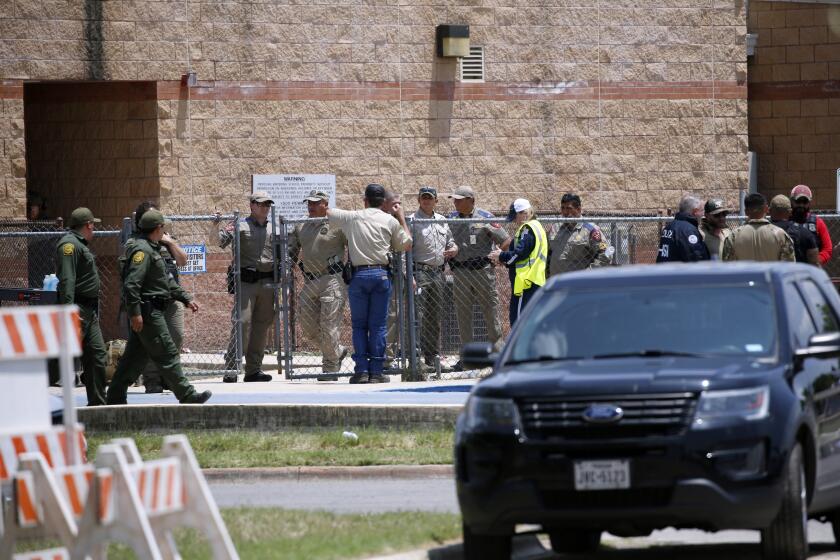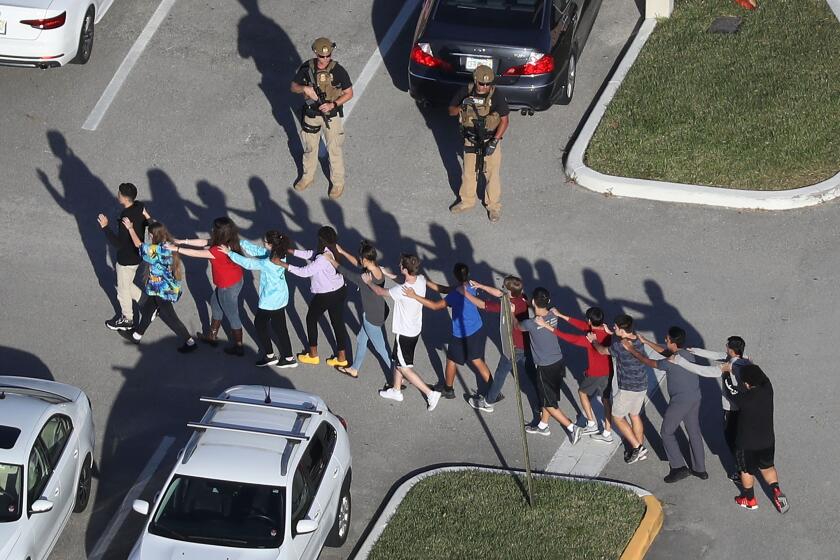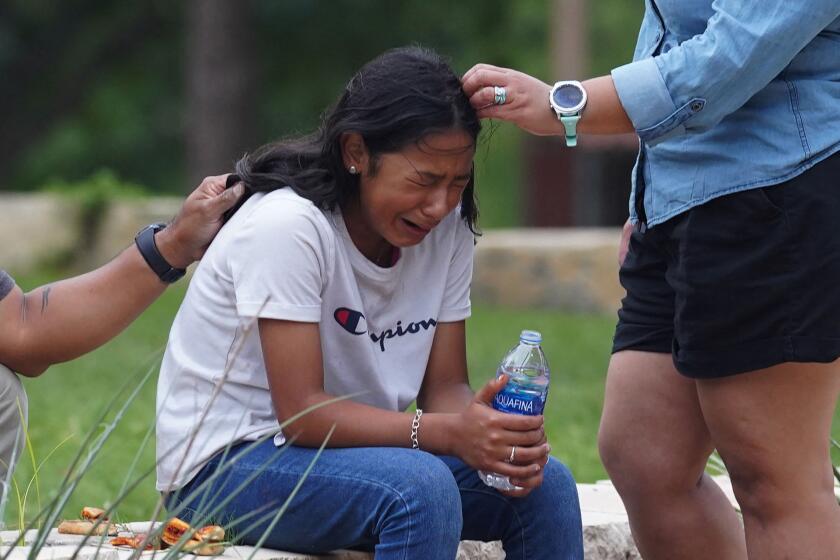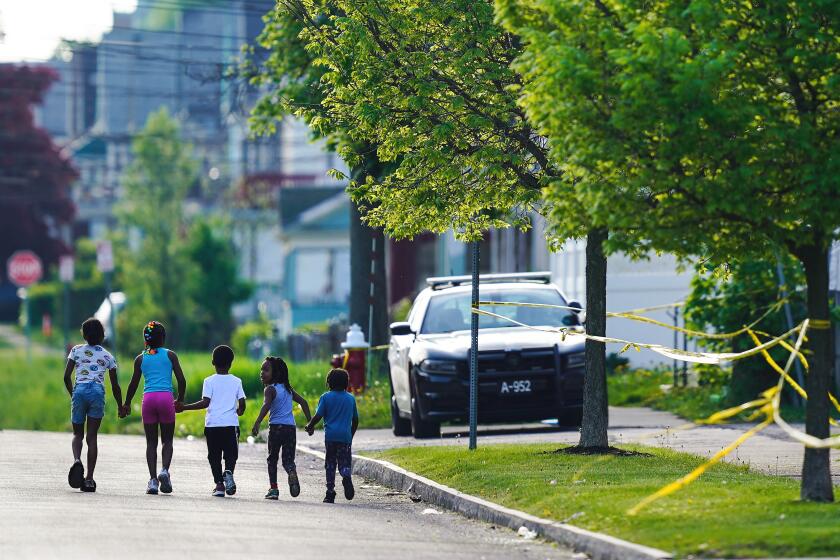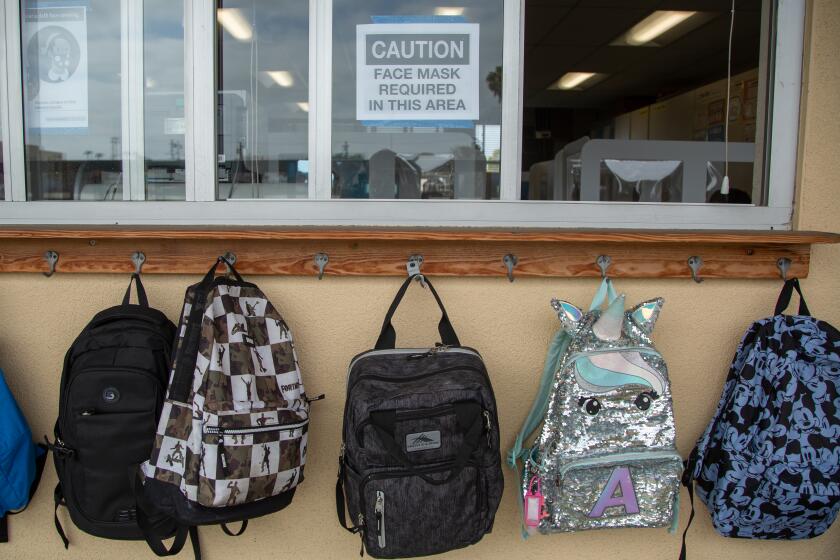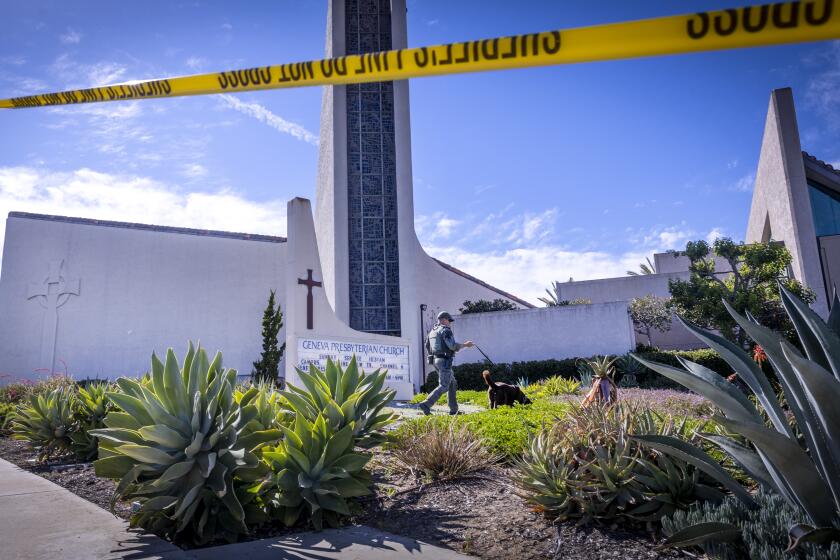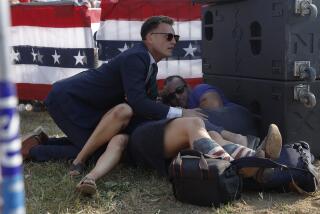How do you survive a mass shooting? We asked experts for advice
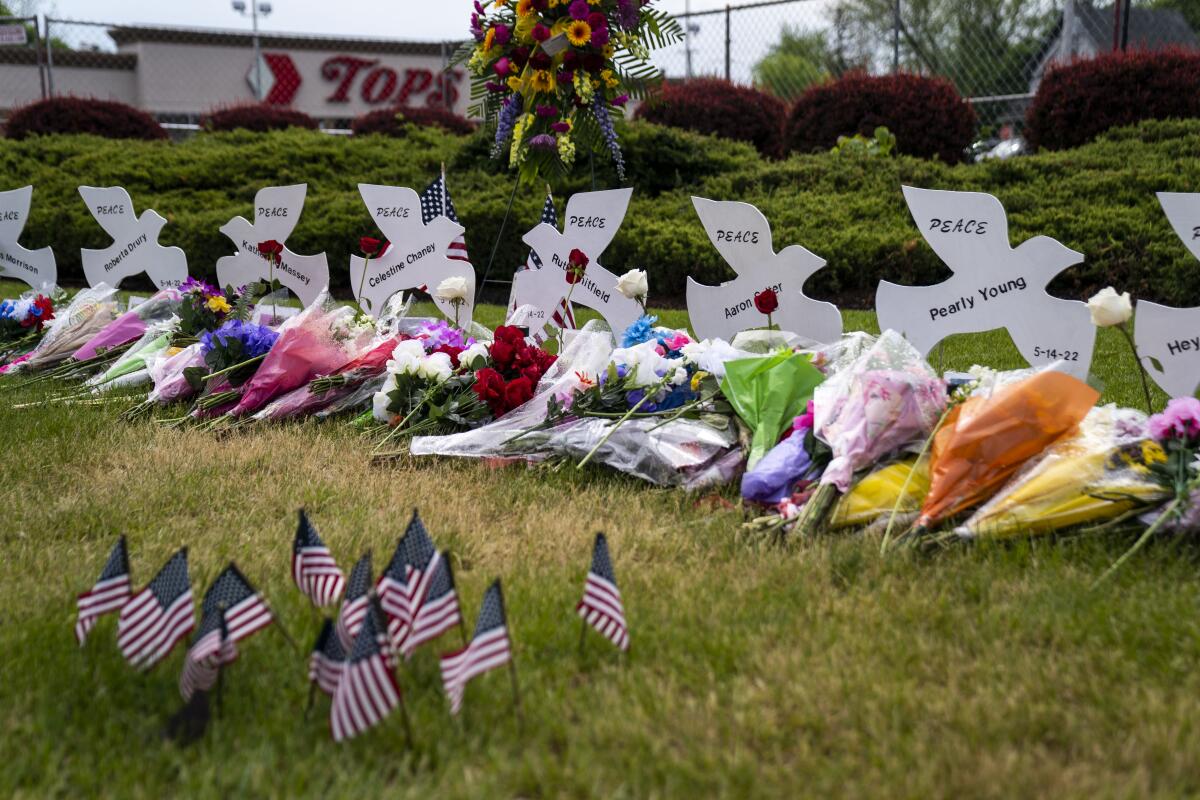
- Share via
A grocery store. A church. An elementary school. Again.
Within 10 days this month, mass shootings in Buffalo, N.Y., Laguna Woods, and Uvalde, Texas, have claimed dozens of lives, shattered families and communities, and put people around the U.S. on edge.
As of Wednesday, there have been 213 mass shootings in the U.S. this year, according to Gun Violence Archive, a nonprofit that tracks data on gun-related violence. Mass shootings are defined as incidents in which four or more people are shot.
According to FBI data, between 2000 and 2019, 2,851 people died in 333 U.S. active-shooter incidents, defined as “an individual actively engaged in killing or attempting to kill people in a confined and populated area.”
Of the more than 45,000 firearm deaths in the U.S. in 2020, nearly 54% were suicides, according to the Centers for Disease Control and Prevention; 42%, or about 19,300, were homicides. Determining how many homicides were the result of mass shootings or active-shooter incidents depends on how the deaths are counted. The FBI puts the total at 38 people killed in active-shooter incidents in 2020, and 103 in 2019. Using the Gun Violence Archive mass-shooting definition, Pew Research Center reported, the 2020 total was 513 people killed. Either way, “fatalities in mass shooting incidents in the U.S. account for a small fraction of all gun murders that occur nationwide each year,” Pew says on its website.
So although mass shootings are much rarer than other forms of gun violence, they are once again occupying the news and our fears. Experts stress that being prepared and conscious of your surroundings is key if you find yourself in an active-shooter situation.
Suicide prevention and crisis counseling resources
If you or someone you know is struggling with suicidal thoughts, seek help from a professional and call 9-8-8. The United States’ first nationwide three-digit mental health crisis hotline 988 will connect callers with trained mental health counselors. Text “HOME” to 741741 in the U.S. and Canada to reach the Crisis Text Line.
In any public space, said Brian Rauchbach, people should be aware of the “baseline” of behavior. Rauchbach is the owner and head trainer at Elite Training Center in Redondo Beach, which teaches several forms of mixed martial arts, as well as active-shooter self-defense courses.
Baseline behavior means seeing how people around you walk, talk and act.
“People who are engaged in making plans to do harm to other people will stand outside of that baseline because they do different things. They dress differently, they look differently, they start to engage with people differently,” Rauchbach said. “And as soon as they start to enact their plans or start walking through their plans, they definitely stand out.”
Texas school shooting: How to help kids get through unspeakable horror
The ‘run, hide, fight’ model
The U.S. Department of Homeland Security suggests using the “run, hide, fight” model if you ever find yourself in a mass shooting.
Rauchbach told The Times last year about his active-shooter and self-defense courses.
“The classes take a view into the possibility of engaging active shooters and what that means both mentally and physically for somebody who’s a civilian,” he said.
Katie Toney, manager at Elite Training Center, emphasized the importance of active-shooter training for everyday people.
“Basic citizens are the first line of defense,” Toney said. “So they kind of have to have some general idea what to do before law enforcement arrives.”
Training on the “run, hide, fight” method is commonplace in some workplaces and schools, but what does it really mean?
At least 18 children and two adults were killed at a Texas elementary school on Tuesday, joining the grim list of the deadliest campus incidents ever.
Run
If you find yourself in a situation where there is gunfire, your natural reaction may be to freeze. It’s how long you take to thaw out and start to move that’s important, Rauchbach said.
Your main focus should be on putting as much “distance between yourself and the shooter” as possible, said Matthew Johnson, director of training at Cohen Security, a San Diego firm that provides security services and trainings on active-shooting situations.
In other words, run away.
“It’s very difficult to hit a moving target,” Rauchbach said. “Either if you’re aggressing or you’re moving away from something, or you’re attacking, you still go from a position to a position, and those positions tend not to be in straight lines.”
While running, it’s important to make yourself a difficult target. That means keeping low, moving quickly and keeping quiet. You may want to scream, Rauchbach said, but that can draw attention.
Recent mass shootings have spurred new calls for gun regulations. Experts say the opposite is happening.
Hide
If you can’t get away, Johnson said, the next step would be “to put as many obstacles or barriers in between yourself and the shooter.”
Rauchbach said there are two options for hiding: concealment and cover.
Doors, shelves and desks are forms of concealment. They’ll hide you from a shooter’s line of sight, but they won’t stop a bullet.
Things like brick walls, concrete pillars and solid steel provide the cover needed to stop bullets, but structures like that aren’t always available.
That’s when Rauchbach said to combine steps one and two — run from cover to concealment and vice versa — until you reach safety.
A surge in student mental health needs, staff shortages, and widespread episodes of misbehavior and violence have put extraordinary strain on school counselors and psychologists.
Fight
If all else fails, you may end up having to fight.
Any number of objects around you — canned food in a grocery store, books or computers in a classroom or office — can be used defensively.
Johnson says the specific object you use to defend yourself isn’t what matters, but the dedication to making the decision to fight.
“We’re talking about literally fighting for your life right here, so anything can become a defensible weapon, doesn’t matter if it’s a book, a chair,” Johnson said. “When people think ‘fight’ and ‘a weapon,’ it doesn’t necessarily have to be a knife or a firearm. It can just be something, anything that you can turn into a weapon and can be used to help defend your life.”
Once you’ve decided to fight, Rauchbach said, it’s much more effective to coordinate an attack with other people. The main goal of an attack should be to disarm and “destroy” the target.
If the shooter has a handgun, Rauchbach said, focus on attacking the limb that’s in control of the firearm. In the case of long guns, such as an AR-15, gain control of the firearm by redirecting the barrel first. Then take down the shooter.
Young people are experiencing an alarming increase in mental health challenges, the U.S. surgeon general has said. Here’s what you should know.
What else you should know
“Run, hide, fight” isn’t an exact science.
“It’s always up to the individual judgment at the scene at the time, so it’s not like if A plus B equals C, then you need to run, and then there’s B plus C equals D, then you need to fight that,” Johnson said. “That’s the general guidelines, but each individual needs to determine for themself.”
In reality, there isn’t time in some of those rare mass shootings to recognize what’s happening, as in the case of the six-minute Aurora, Colo., movie theater shooting in 2012. Still, education, preparation and training play a part in improving your safety, as well as your frame of mind, according to Rauchbach.
“The most important aspect of all of this is mindset,” Rauchbach said. “People focus on the physicality side of it a lot, but the mindset side is truly everything. You’re not going to engage correctly if you don’t have the proper mindset.”
How a luncheon celebrating the return of a congregation’s pastor turned into a deadly scene.
More to Read
Sign up for Essential California
The most important California stories and recommendations in your inbox every morning.
You may occasionally receive promotional content from the Los Angeles Times.
